’66 Shelby GT350 sold for cheap, but it has stories
The 1965 and 1966 GT350s were the very first Shelby Mustangs. They’re also the purest, the raciest, and, on the classic car market, the most expensive. The condition #2 (Excellent) value for a ’66 GT350 fastback in the Hagerty Price Guide is $285,000, so when a real-deal restored car with classic Shelby colors and several special features sold on AutoHunter this week for $217,000, we got curious.
Like many high-tier classics that sell for bargain money, there are some asterisks in its history, including a theft. If we take the pros and cons into account, though, was this Shelby a good deal?
Thanks to the Cobra, Shelby was already a big name in American performance by 1965, which is when he turned his attention to the all-new Mustang. In turning Ford’s breakout-hit pony car into a track weapon, Shelby took the tried and true 289-cubic-inch V-8 and massaged it with an aluminum high-rise intake manifold, headers, and more for a bump to 306 horsepower, compared to 271 in the hottest of Ford’s offerings. Rear seats were replaced with a fiberglass shelf and all GT350s got a fiberglass hood, while braking and suspension upgrades gave the Shelby ‘Stang all-round performance. An even hotter “R” version of the GT350 won the SCCA B-Production championship three years on the trot. A total of 562 cars were built for 1965. Buyers could get any color they wanted as long as it was Wimbledon White.
For 1966, the most obvious changes were the addition of more colors and rear quarter windows in place of the ’65’s extractor vents. But the 1966 cars are also decidedly less racy. The over-rider traction bars went away, a regular back seat arrived on the options list, and rear-exit exhausts replaced the sexy side pipes. Nearly 1400 were sold. The trend then continued on from there, with 1967-and-later GT350s getting even less sporty: Think less Shelby and more Ford. The original ’65s are therefore the ones to have, but there were also 252 Shelby Mustangs built for 1966 that the Shelby community labels “carryover” cars—something of a cross between ’65 and ’66.
Which brings us to this ’66 Shelby, SFM6S006. It’s the sixth 1966 GT350 built and one of those “carryover” cars, which means it has desirable features from the ’65 model like lowered front control arms, rear over-rider traction bars, ’65 interior appointments, and a gloss-black engine block (’66 blocks were painted blue). It was fully restored by a Shelby specialist in the late 2000s and, by the photos at least, looks like a beautiful and correct car.
In addition to the $285K condition #2 value, the Hagerty Price Guide also tacks on a 35 percent premium for 1966 carryover cars. Even ignoring the premium, though, this GT350 sold for about 28 percent under #2 value at a $207,000 hammer bid, or $217,000 final price. The seller, Barret-Jackson (who has a relationship with online auction company AutoHunter), also had it listed for a not-much-higher $245,000 on Hemmings. The delta between its price guide value and sale price is largely due to misfortune early in this car’s life. 57 years ago, the still unsold Mustang was stolen, stripped, and recovered, after which it was bought back by the original Ohio Ford dealer. According to Barrett-Jackson, the car then went through five owners before its restoration in the 2000s and subsequent sale to a Shelby enthusiast in Denmark.
How much of the car was “stripped” in-period isn’t really clear, but it was a lot. The restoration involved replacing much of the front of the body as well as the drivetrain. It also rides on the optional Shelby/Cragar wheels rather than the steelies it originally came with, and wears blue Le Mans stripes instead of its original all-white garb. So while it all looks clean and correct, much of this car isn’t what rolled out of Shelby American in late 1965.
Replacement drivetrains and rebodies are of course a knock to values. So is a theft on the record. But lots of cars that are half a century old have accumulated their own stories. Age, use, and abuse can result in a replacement engine. Rust or accident damage can require body work. This stuff happens. So for someone looking for a genuine GT350 who wants to use it, enjoy it and casually show it but isn’t into sweating all the details, this car came at a serious discount.
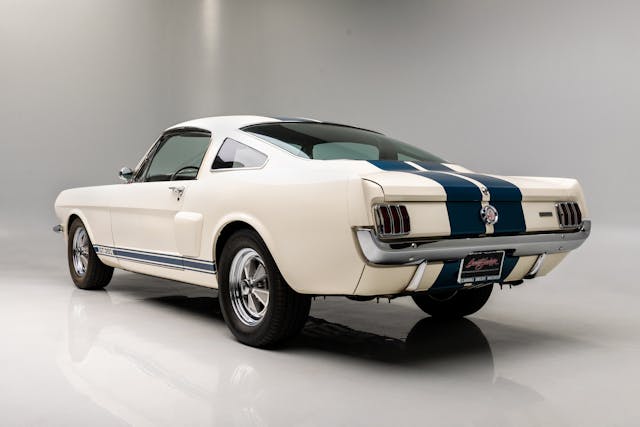
***
Check out the Hagerty Media homepage so you don’t miss a single story, or better yet, bookmark it. To get our best stories delivered right to your inbox, subscribe to our newsletters.
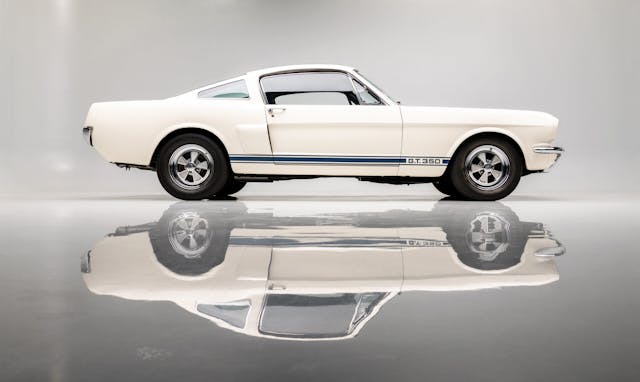
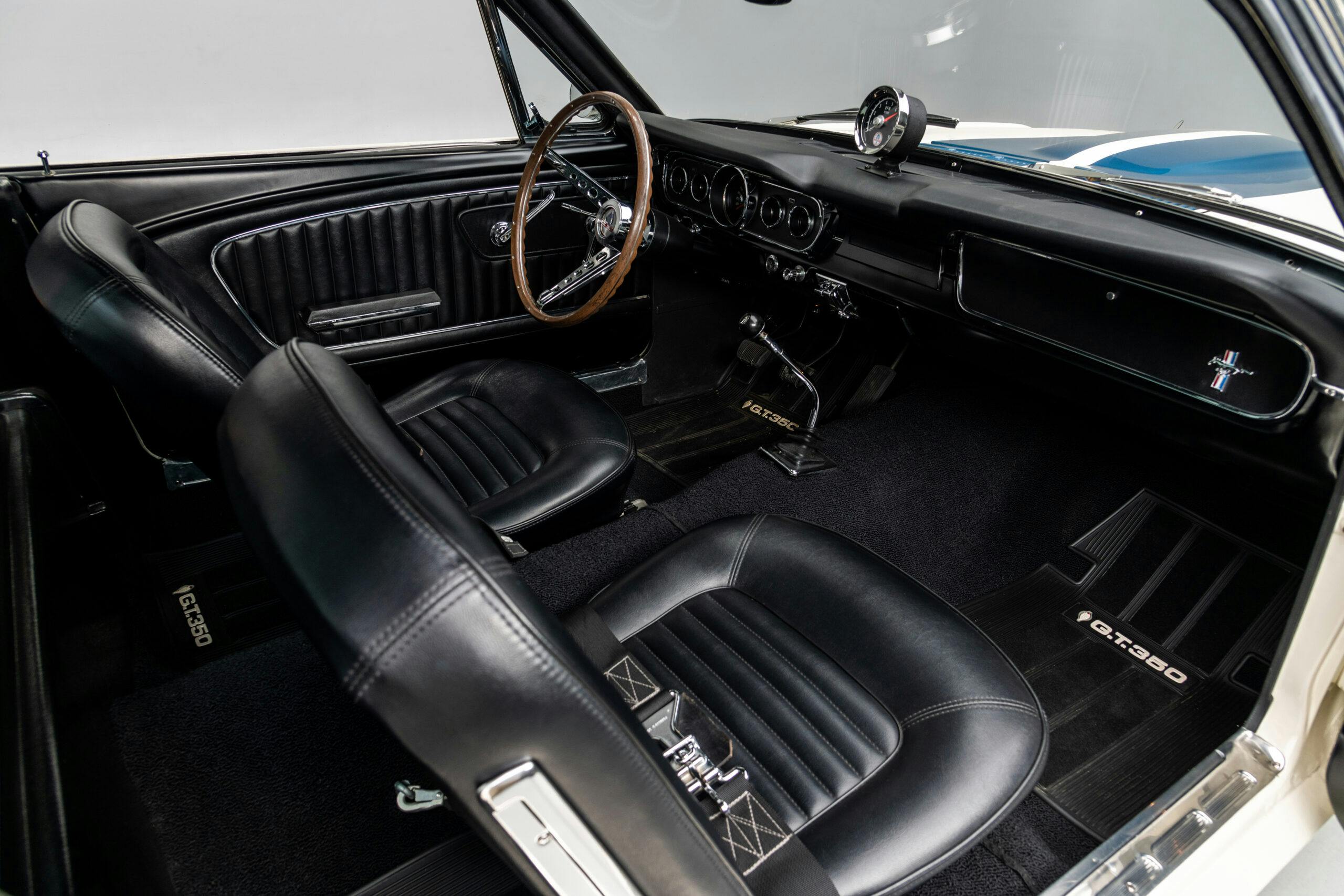

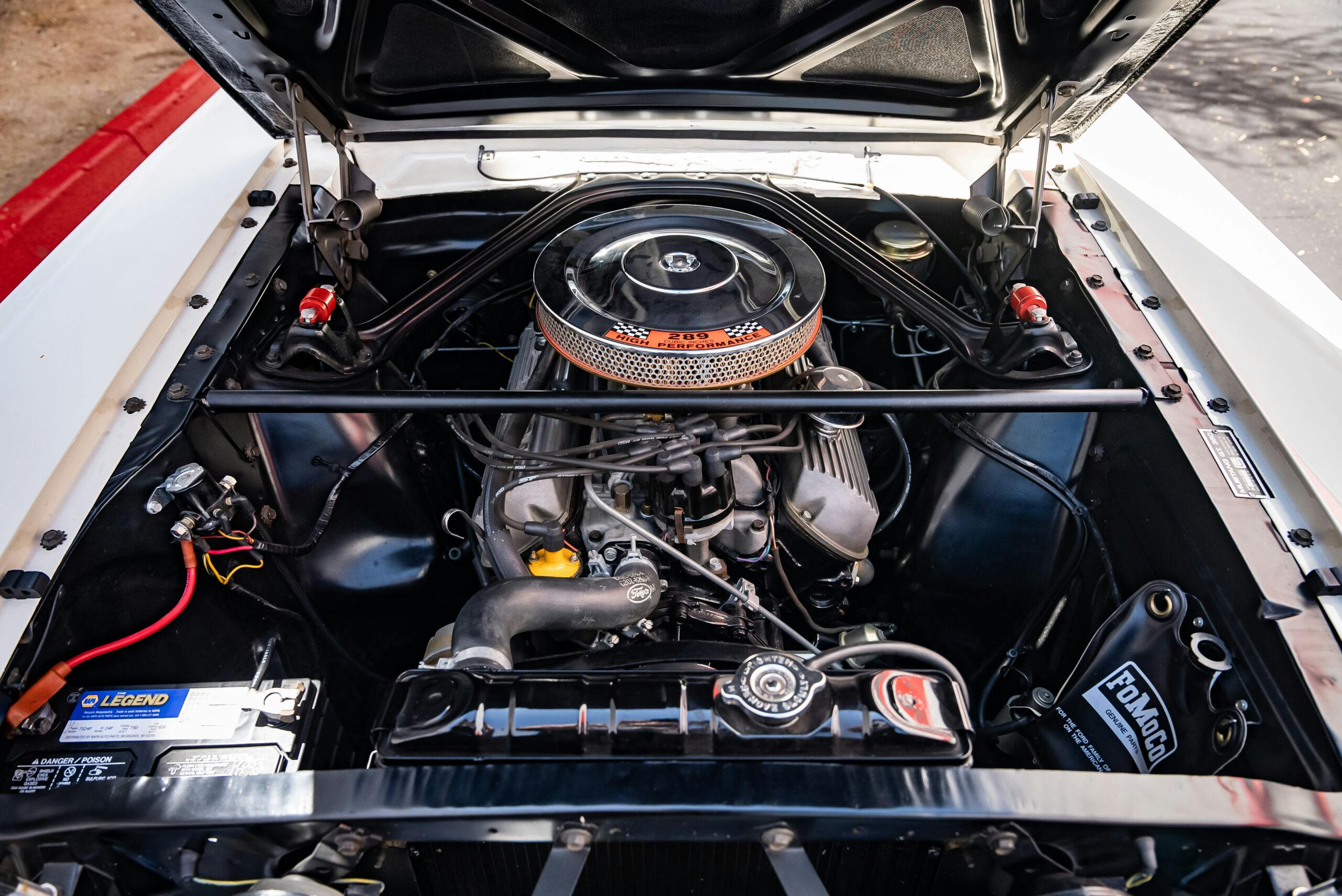
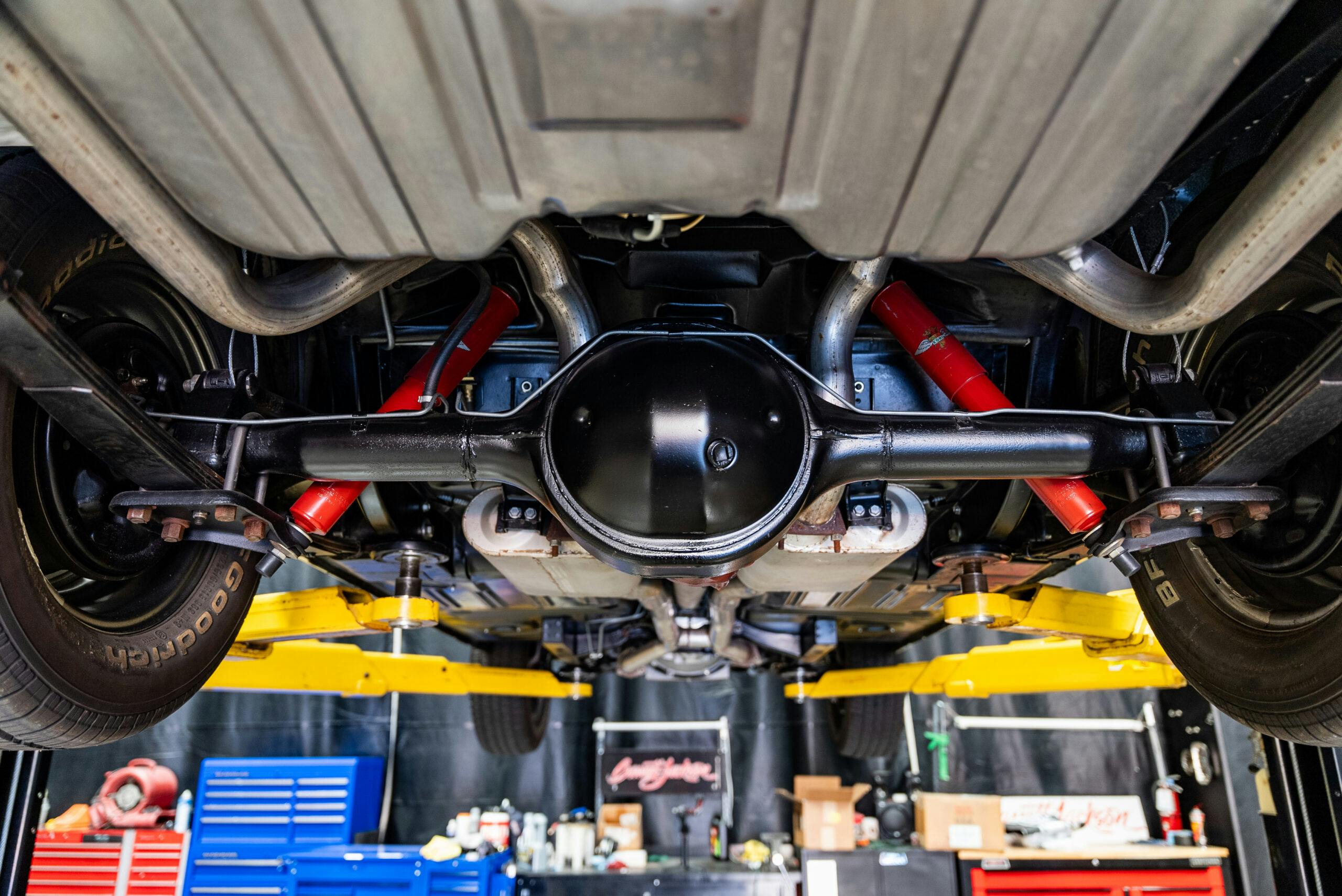
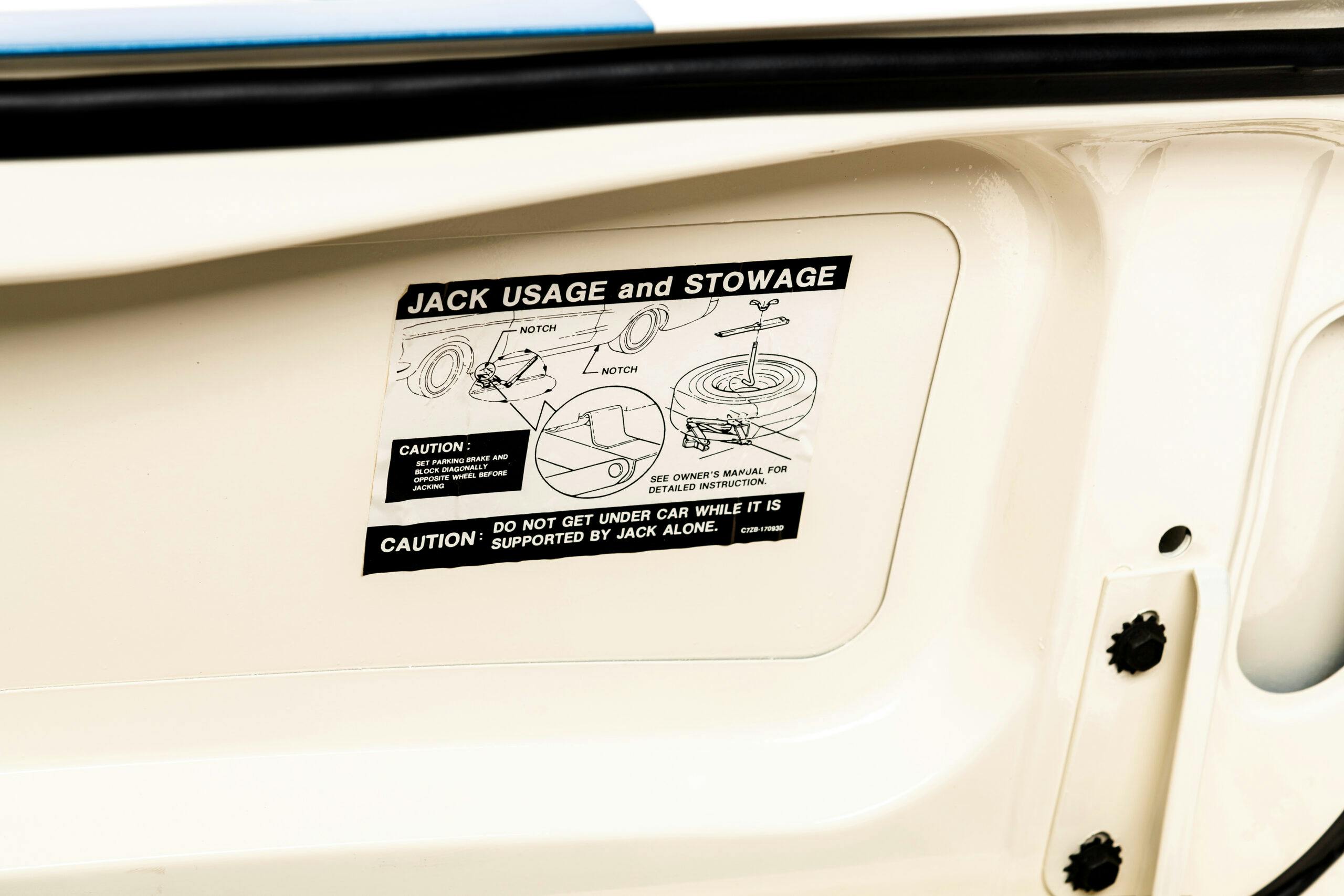



200 large for a vehicle isn’t likely to be in my budget any time soon, if ever. However, if I were in the market for an early GT350, one like this would be the one to have. I like to drive my cars, sometimes long distances, and I don’t want to be worried about it too much.
Stories like this remind me why I generally tend to dismiss the hole “collector car market mentality”. There are people who find that a car with a replacement fender, brake upgrade, or theft history (among other “stuff happens in life” instances) are soooo important that they will downgrade the already overinflated price of a vehicle by tens of thousands of dollars. Sheesh folks. First, they’re just cars. Second, read what David C. wrote above – “…if I were in the market…one like this would be the one to have. I like to drive my cars…and I don’t want to be worried about it too much”. There’s a healthy attitude, IMO. If you like a car, get it, take care of it, and drive it. Don’t sweat the small stuff! At least, that’s my take – you do you, of course.
I’ll say it again, $217k isn’t cheap. It’s a slight reduction in a ridiculous price.
Oh, if cars could tell stories….
I agree with the comments above. If I ever had the money to own an “all numbers matching/correct” blah blah, -I wouldn’t. Plain and simple, I enjoy driving my cars. I enjoy working on them almost as much. Museum pieces are great, and are for those that own and enjoy museums.
This would be a great Carryover Shelby to own. And truth be told, most of these cars had replacement blocks, transmissions, etc. in short order -lets face it, they were driven hard back in the day (a quick read of the SAAC Registry will confirm many warranty reports to that effect).
As DUB6 states – “don’t sweat the small stuff”.
details like this matter to folks who are buying them as an asset or to make money by selling it people who’s perspective on money and value are different than they are for us “work for our money” folks; I don’t buy $200 T-shirts or $1000 shoes but for the guys who do, $200-300k isn’t that much money and the details justify the higher value
This could be just an overvalued clone with a sketchy past. In regard to its origin story about “stripped and bought back by the dealer”, why would they ever do that? They could just close the book with an insurance claim and order another if they really wanted a Shelby in the showroom. It’s not like they were a rare commodity in the time, just a phone call to zone would gladly put another on the Shelby books. Remember, Shelby made a deal with Hertz to sell more cars, they weren’t flying out of showrooms. So, like the Seinfeld Porsche, it’s history may be more or less than a chassis number and a bunch of period correct parts. Paging Dr. Marti.
In my opinion, somebody way overpaid for a rather un-original car. But I’ll bet it’s still a blast to polish and drive. My C1 Corvette has a Chevy replacement engine and transmission upgrade, both specification-correct for original parts. As far as authenticity, a crate 350 and a Turbo Hydramatic would be no more incorrect than what was installed by a Chevy dealer years ago. But when I floor the loud pedal and row the 4 speed, no one knows the numbers don’t match. If it bothered me that much, I’d have bought a different car, almost 50 years ago.
Everyone needs to remember that the hammer price is only about four fifths of what the buyer paid. Buyer’s premium and sales tax get added at the office with no audience or cameras around. Is it still a “bargain”?
While I agree that these cars were made to be driven & enjoyed, when you are laying down $200K + on a classic car you do want to know exactly what you are buying. No one buys cars at this level to drive them until they are ready for the junk yard – there is investment value to be considered and at some point you will at least want to get most of the money you paid back out when the time comes to sell. As an owner of an unrestored, driver quality ’65 GT350, aside from driving it (often) part of the enjoyment is maintaining it to a high level and bringing the car to C&C events to share my knowledge and enthusiasm with others in the car hobby.
Everything’s right. Hose clamps, nuts and bolts, red shocks, yellow coil, decals, hoses etc…
Then you put a NAPA battery in it.
I know that there’s original looking batteries out there. There’s even caps to make it LOOK like an old battery.
After all that painstaking detail, wouldn’t at least a Motorcraft replacement battery be a better choice?